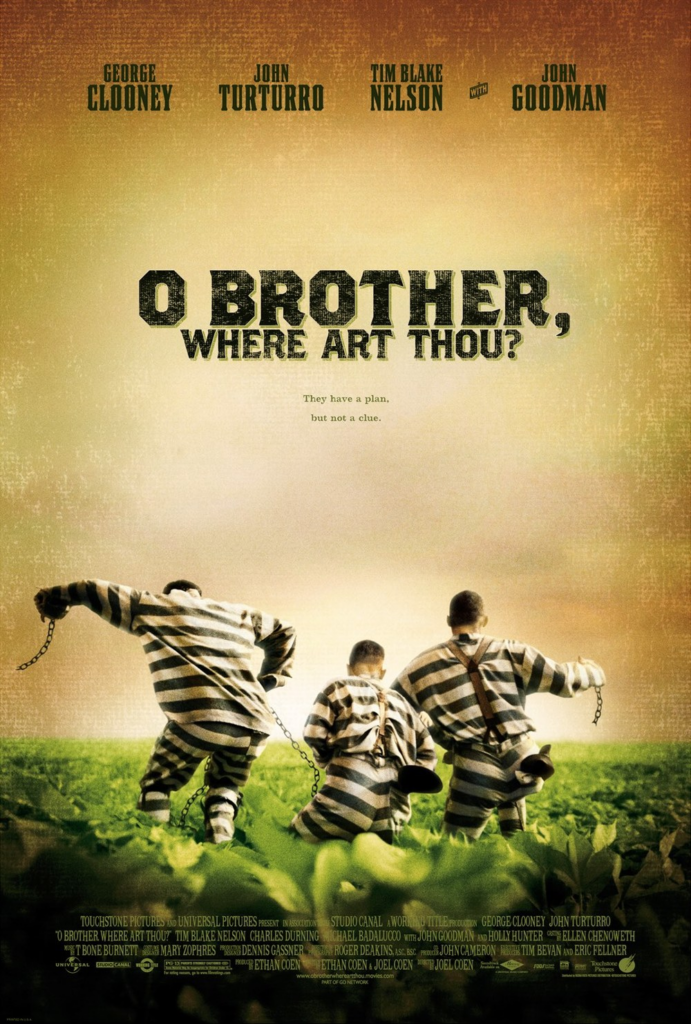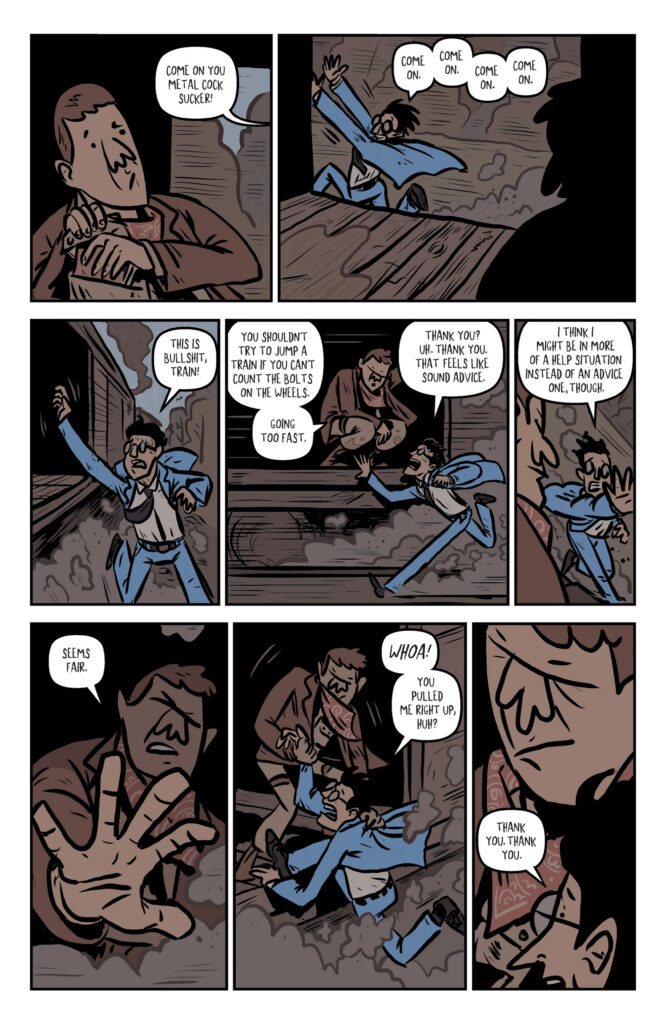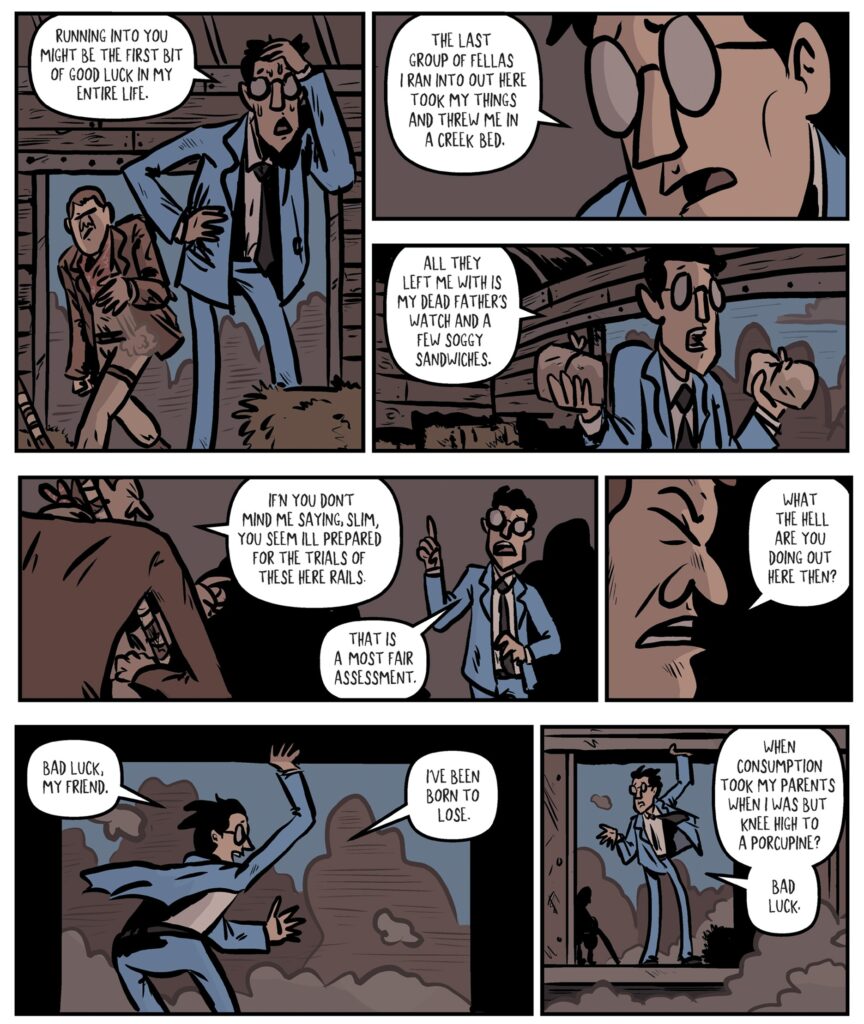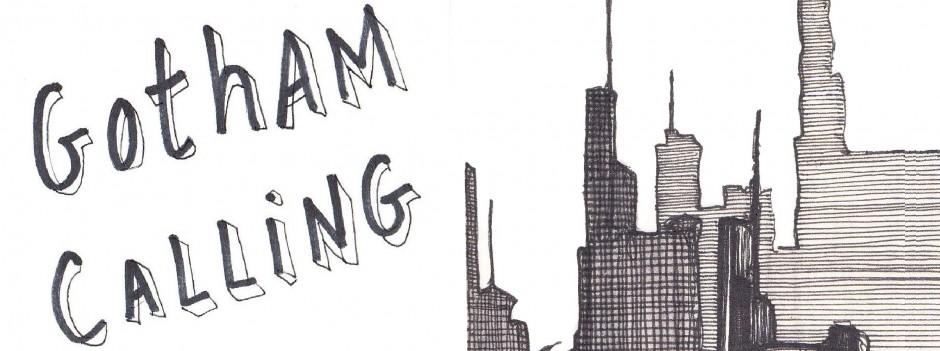It was quite a break, but I’m back to the project of recommending movies and comics for fans of the Coen Brothers’ filmography. Let’s see how long I can stick to it this time!

Following the rollicking misadventures of a trio of convicts on the run in 1930s’ Mississippi, O Brother, Where art Thou? is the most Coen film since Barton Fink, in the sense that it escapes easy categorization beyond being a happy confluence of the brothers’ recurring themes and style. Sure, you can describe it as a pure comedy (there is certainly no shortage of jokes, sight gags, and broad performances), or even as a musical comedy (given how often folk songs spill over from the background soundtrack into the narrative itself), but there are so many extra layers to appreciate… The film is packed both with the depicted era’s imagery (from bank robbers and bible sellers all the way to racial persecution and populist political campaigns) *and* with multiple allusions to Homer’s epic poem Odyssey. And then, in a further metafictional level, there are a number of references to Preston Sturges’ 1941 classic film Sullivan’s Travels, in which a successful comedy director, John L. Sullivan, was so committed to doing a serious drama about the Great Depression – called O Brother, Where Art Thou? – that he disguised himself as a tramp and set out to discover what it was like to live in poverty… only to repeatedly end up in Hollywood! Sturges’ influence has hovered over the Coens’ work from early on (especially in The Hudsucker Proxy), but the intertextuality reaches a whole new pitch here, since the implicit premise is that their 2000 opus could’ve been the very same movie Sullivan wrote (not initially, but after his experiences, some of which are echoed in this film). That said, given the state of the world today, the gesture of exploring the tension between escapism and populism (both within and through the story) has lost none of its resonance.

I can’t resist recommending Sullivan’s Travels itself. Even setting aside the meta dialogue between the two works, Sturges’ movie is steeped in Coen-esque reflexivity and ambiguity: starting out as a truly hilarious farce about the impossibility of properly capturing social misery onscreen, halfway through Sullivan’s Travels paradoxically shifts gears into a quasi-ethnographic, gut-wrenching portrayal of systemic injustice and human suffering, so that the second part of the film either subverts the first one or is subverted by what came before, which preemptively exposed it as inescapably artificial, if not downright hypocritical. This ambiguity extends to the racial dimension (which also occupies a key place in the Coens’ movie), given the remarkably contrasting depictions of a comical black cook early on and a dignified African-American community near the end. The result is fascinating… and how earnestly you take the ending is really only up to you.
Peter Bogdanovich’s Paper Moon is pretty much the missing link between Sullivan’s Travels and O Brother, Where Art Thou?. It’s (beautifully) shot in black & white, like the former, but it was made in 1973, so it adds layers of retrospective critical distance – as well as some tender romanticization – towards the Great Depression, where it is also set. Following a conman and a nine-year-old orphan girl he reluctantly picked up along the way as they travel from Kansas to Missouri, this is another road movie about fast-talkers who aren’t quite as smart as they’d like to believe – and another black comedy that seeks a peculiar tonal balance between amusing interactions and the harshness of the real-world background, imbuing its zany characters with a sense of humanity even among all the awful stuff they do to each other.
Finally, when it comes to comics, I can’t think of a recommendation more appropriate than Rock Candy Mountain.


Rock Candy Mountain #1
Written and drawn by Kyle Starks, this mini-series (republished as a paperback last year) follows a pair of hobos on a surreal – and very funny – quest/chase across the South, in the late 1940s, that shares with O Brother, Where Art Thou? a propensity for quirky dialogue, religious symbols, a prison break, and a tribute to folk music (the whole premise is that the protagonist is looking for the fantastical place described in the titular song). Although nothing can match the impact of the film’s majestic colors, Chris Schweizer also goes for a sepia-toned palette, which together with Stark’s vibrant cartooning makes the comic a visual delight in its own way. That said, as riotous as Rock Candy Mountain consistently is, my favorite bits ended up being in the series’ backmatter, which contained a set of informative essays about the hobos’ code, lore, and organization, as well about some of the Christian mythology the story draws on.
